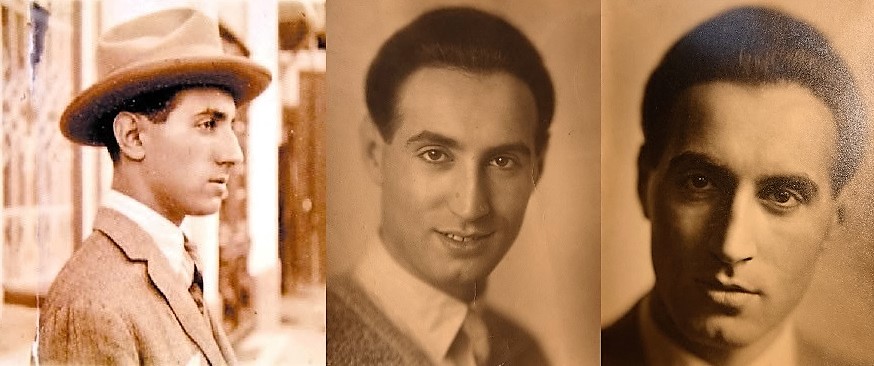Alexandru Dimitrie Xenopol was born on March 24, 1847, in Păcurari, a settlement in Iași, the capital of the Romanian principality of Moldavia. At that time, Moldavia was still officially an Ottoman vassal, but in practice the Ottoman suzerainty had largely been usurped by Russian influence since the time of Catherine the Great. Xenopol would witness the process of unification of Moldavia with the fellow Romanian principality of Wallachia to the west, the capital of which was Bucharest. As Xenopol came of age, the principalities would be formally unified in 1859. Later, when Xenopol had already started to become somewhat known as a historian, Romania would officially win independence from the Ottoman Empire as Russia’s most important ally in the Russo-Turkish War of 1877-1878. The improvement of Romania’s status in Europe would be the cause to which Xenopol would dedicate his life and his considerable intellectual talents. In addition to his Romanian nationalism, Xenopol also had patriotic feelings for Iași as a city, Moldavia as a region and former principality, and Europe as an ethnic and civilizational family.
Xenopol was the son of Dimitrie Xenopol, a mysterious immigrant to Moldavia (and convert to that principality’s native Orthodoxy) of Anglo-Saxon and German extraction, of whom more will be remarked later, and a Romanian mother from a family of Greek origin. Dimitrie, who knew German, Russian, French, and other languages as well as Romanian, was a clerk at the Prussian Consulate in Iași when Alexandru was born. Dimitrie later held a job working in the garden of a Iași prison-keeper. Although Dimitrie never made much money, he went to great lengths to ensure that Alexandru would be well-educated. Young Xenopol decided on history as his favorite subject after reading François Guizot’s works on European and French history after school in the Iași’s prison-keeper’s garden.
Growing up in Iași, Xenopol learned Greek and mastered Latin as well as learning French and German. One of his teachers in Iași, Titu Maiorescu, would become an important patron of his before bitterly falling out with Xenopol. Maiorescu was the leader of a Iași-based literary circle called Junimea, which was dedicated to founding a new school of Romanian literary and cultural criticism. For years, Xenopol developed a close relationship with the group’s secretary, Iacob Negruzzi, who would likewise later become his sworn enemy.
Under Junimea’s financial patronage, Xenopol studied in Berlin from the late 1860s to 1871. His instructors included the great historians Theodor Mommsen and Leopold von Ranke. Xenopol completed courses in philosophy and law by 1871, and biographer Paul A. Hiemstra argues that Xenopol tended to approach the field of history with the sensibilities of a lawyer making legal cases.
In 1872, having returned to Iași the previous year, Xenopol attended a ceremony at a monastery in the commune of Putna founded by the distinguished 15th century Moldavian prince Stephen the Great, the most beloved ruler of Moldavia and a prolific patron of monasteries, noted for handing Mehmed II “the Conqueror” the greatest defeat the Ottomans had seen thus far in 1575. On the 400th anniversary of the monastery’s construction, a competition was held for speeches about Stephen the Great in relation to the Romanian people. Xenopol’s speech, which connected the legacy of Stephen the Great to Romanian nationalism, won the competition.
At the time he won this competition, Xenopol was considered a representative of the Junimea circle. Even when he was still associated with Junimea, however, Xenopol’s ideas were never identical with Maiorescu’s and strayed from the latter’s influence. Xenopol further drifted from the group’s influence in the 1870s until officially breaking with Junimea in 1878, prompting the group’s leaders to attack and often smear him.
Xenopol’s account of his father as of Anglo-Saxon and German origin conflicts with the story of his bitter former friend Iacob Negruzzi that his father was a Jewish immigrant. Negruzzi, it should be noted, also dubiously alleged that Xenopol had gone mad from a syphilis infection. One of the reasons Xenopol had fallen out with his onetime associates at Junimea being that he found them insufficiently critical of Jewish immigration to Romania, an allegation that his father was a Jewish immigrant would have been an excellent way to embarrass him. (On the issue of Jewish immigration to Romania, as well as that of alcoholism in Romania, Xenopol worked closely with A.C. Cuza—although their worldviews were never synonymous.) That Xenopol’s own origin story is—at the very least—closer to the truth is immediately affirmed by a viewing of photographs of him, with his markedly English appearance.
Xenopol’s animosities with Junimea, rival Romanian historians, and anti-Romanian foreign historians did not hamper his productivity. In 1880 he published a two-volume work on the rivalry between the Ottoman Empire and Russia for influence over the Romanian principalities; Xenopol’s account is unsympathetic to either power. In 1884 he published a scathing but well-argued response to certain Austrian claims about the origin of the Romanian people. But it was from 1888 to 1893, publishing a volume each year, that Xenopol produced his pioneering six-volume work Istoria românilor din Dacia-Traiană. The work covers the history of Romania from pre-Roman times to the nineteenth century; it was groundbreaking for its time and, although obviously dated, is still rightly regarded as a classic in Romania. Xenopol also wrote a two-volume abridgement of this work in French, which was successful when it was published in 1896.
Having studied in Berlin under the economic theorist Eugen K. Dühring, Xenopol also showed a keen interest in economics. (This author, Amory Stern, has commented on Eugen Dühring and his influence as Eminescu’s teacher in Berlin in the introduction to the 2023 English edition of Oswald Spengler’s Prussianism and Socialism.) Dismayed by Romania’s antiquated and subservient agricultural economy, Xenopol advocated industrial modernization.
Xenopol argued that Romania’s lack of industry left the nation vulnerable to exploitation by wealthier countries and susceptible to corruption as well as a shrinking population. Reflecting his education in Bismarck’s Prussia under Dühring, Xenopol also argued against free trade and economic liberalism, instead favoring economic nationalist programs of industrialization. On the other hand, he recommended that his country proceed with caution when implementing such an agenda, as Romania was in no position to start a war.
Having accomplished much in the fields of history and economics, by the end of the 19th century Xenopol added to these achievements his contribution to philosophy, specifically the philosophy of history. In 1899, he published his philosophical tract in French, Les Principes Fondamentaux de l’Histoire. This work was revised in a 1908 second edition as La Theorie de l’Histoire. It has also been translated into Romanian as Teoria istoriei and Principiile fundamentale ale istoriei.
Xenopol’s book dealt with a popular question among philosophers at the time, that of whether or not the field of history can be considered a science, and if so, what kind of science it is. In the book, Xenopol draws a division between the sciences of unchanging laws and the sciences of changing phenomena. History, he proposes, belongs to the latter kind of science.
Xenopol begins his thesis with a philosophical realist rejection of Kantian epistemology. Hiemstra’s biography complains that Xenopol’s dismissal of Kant’s ideas is undeveloped, but although this would have been quite a defect if he had written an epistemologically themed book, Xenopol’s pithy critique of Kantian idealism is a reasonably adequate argument that the latter is unsuited for the historian’s field. It doesn’t require an especially deep analysis to argue that epistemological realism best suits the scholarship of history—at least not in a book themed after the philosophy of history, rather than epistemological questions themselves.
Xenopol then develops a categorization of “theoretical sciences” as those that deal with repeating facts and can be measured with abstract formulas. “Historical sciences” by contrast deal with successions of changing, unrepeatable facts and can only be measured empirically. These include not only history proper but also paleontology and the study of human descent — as opposed to the laws of biology, which belong to the “theoretical sciences,” together with the physical sciences.
Whereas the theoretical sciences, according to Xenopol’s philosophy, deal with space, the historical sciences are related to time. For Xenopol, unlike Kant, both time and space belong to reality, and not just to the human perception. Xenopol defines science as the truthful reflection of reality, and accordingly he responds to various philosophical objections arguing that history does not qualify as a science, because it cannot be determined with abstract formulas. To Xenopol, the theoretical sciences only represent one category of science, but the historical sciences equally qualify as truthfully reflecting reality. The book then deals with the difference between the historical sciences and the moral or political biases of the historian.
La Theorie de l’Histoire then takes a turn that would be considered more controversial today than it was when the book was written. Although Xenopol viewed the facts of history as always changing and never exactly repeating, he also believed in some constant factors throughout history. The first of those he lists is race.
Xenopol argues that populations of human beings differ not just physically, but intellectually and spiritually. Some of these differences, according to Xenopol, are the result of natural evolution, but he also believes that differences acquired through major historical processes are hereditary. This, he believes, can be counted among the constant elements in history. Although this kind of outlook was popular in the fin de siècle era, when the book was published, it was by no means universally accepted, as demonstrated by Xenopol’s replies to the argument’s critics. (In his views on race, Xenopol was influenced by the sociological arguments of Gustave Le Bon, whose ideas Xenopol often applied to the philosophy of history.)
Related to race, but distinct from it in Xenopol’s model, is “national character.” This phenomenon, according to Xenopol, is formed from the natural and constant influences of a race placed against the changing backdrop of historical events. “Distinguishing between race and nationality in a manner which he had not managed to articulate during his student years,” summarizes Hiemstra, “Xenopol described national character as the ‘translation’ of a peculiar combination of organically based psychological complexions into the ‘intellectual manifestations’ of a particular national group.”
In this aspect of Xenopol’s thinking, many would see a contrast with what he argues in the same book about national and other prejudices clouding the potential of the field of history for scientific truth. Xenopol — who, in contrast to the following century’s narratives of Romania’s National Communist period, admired the ancient Romans — believed Romanians to belong to “the Latin race,” which he considered an example of a race evolved from acquired but hereditary characteristics. This was a different category of race for him than the designation of a naturally formed race, such as “the white race.” Xenopol’s admiration for both the Dacians and the Romans bears comparison with Eminescu’s, but also with French currents of thought admiring both the Romans and the Gauls.
In contrast to the typical Eastern European cult of autochthonous status, Xenopol emphasized the role of migrations and colonizations in the foundations of both Romania and Europe. That he starts Istoria românilor din Dacia-Traiană with the Scythians even before the Dacians can, to some extent, be seen as a dated but reasonably accurate description of the intrusive Indo-European elements from Scythia. With the same kind of romantic realism, as Xenopol’s style may be termed, he also proudly highlighted historic instances of colonization by the Romanians themselves. (Xenopol was an early pioneer in writing about the Vlacho-Bulgarian Empire, but he came of age at a time when Byzantinology was not very widely studied; had he known more about Byzantinology, Xenopol would have probably discussed the later findings of Adolf Armbruster, about how the early Romanians colonized Constantinople.)
Among Xenopol’s beliefs was that the historical and contemporary Hungarian rule of the Carpathians amounted to a colonization lacking the European legitimacy of most other contemporary European colonies, because the Magyar language and nationality are not of Indo-European origin. According to Xenopol: “The Hungarians owe their civilization only to their very considerable mixture with such peoples of Aryan race, capable of civilization as the Slavs and the Romanians.” On the other hand, he displayed respect and admiration for Germans and Slavs, though in both cases recognizing their historic and contemporary rivalries with Romania. Sharing less with the small-space chauvinism associated with Southeastern Europe than with the kind of racial bellicosity his time is known for, Xenopol ranked the white race, and above all the Aryan race of Europe, at the top of an unabashed hierarchy of human races.
Xenopol represented a country that had never been a colonial power, and which had a long history of having the economic (but not legal) status of a colony; Xenopol the economist and the philosopher of history saw colonialism in Africa as an evolutionary cautionary tale for his own people. Xenopol’s theory of evolution as a mystery anticipates that of Lucian Blaga in Triologia culturii. Xenopol’s philosophical work should be considered together with Xenopol’s work as an economist, in which he argued that Romania had degenerated into African socioeconomic conditions.
Xenopol would live into the first two decades of the twentieth century, seeing his work as a historian inspire both followers and critics in Romania. By that time the Romanian capital and former Wallachian capital of Bucharest had replaced his native Moldavian capital of Iași as the chief Romanian cultural center, and Xenopol was not happy about it. Falling gravely ill and partially paralyzed, Xenopol lived out the turbulent years of World War I as an invalid. By that time he was not even fully articulate, but after Romania gained the region of Transylvania from the hated Austro-Hungarian Empire and Béla Kun’s Communist Hungary in the aftermath of the war, the younger Romanian historian Nicolae Iorga visited Xenopol and claimed to discern a smile on Xenopol’s face. Xenopol, who had fallen on hard times since the war years, died on February 27, 1920, on the very same day the Romanian Parliament voted to give him a pension.
For someone from a country with a strong history of anti-modern romanticism on the one hand, and a later history under Stalinist models of Communism on the other, Xenopol comes across as something of a liberal; he was not one by Western standards. Xenopol’s work displays a certain hardness not seen in other, more sentimental Romanian historians, such as Nicolae Bălcescu before Xenopol or Nicolae Iorga after him. Perhaps nowhere is this better seen than in his philosophy of history.
In his theme of national degeneration, Xenopol’s thinking somewhat resembles the pessimistic outlook of Eminescu. The difference is that Xenopol’s philosophy is based on a realist metaphysics in place of Eminescu’s philosophical idealism. But like Eminescu, Xenopol wasn’t just a thinker of degeneration, but also of regeneration.
A.D. Xenopol was more than just the pioneering historian of Romania and historiographer of the Romanian people he is most often remembered for. Long before the National Communist period, Xenopol the economist recognized the need to industrialize Romania. As a philosopher of history, Xenopol was also a philosopher of Europe—that is, Europe the ethnic family, long before anyone had ever heard of Europe the bureaucracy. If there is a central theme to his work as a historian, his work as a sociologist, his work as an economist, and his work as a philosopher together, it is that of degeneration and regeneration.
–Amory Stern, June 2025
Montgomery County, Pennsylvania






